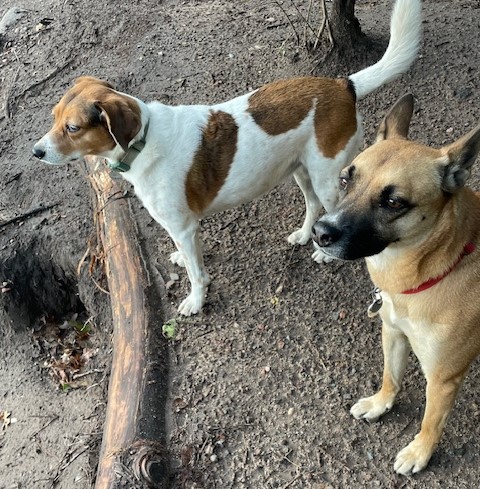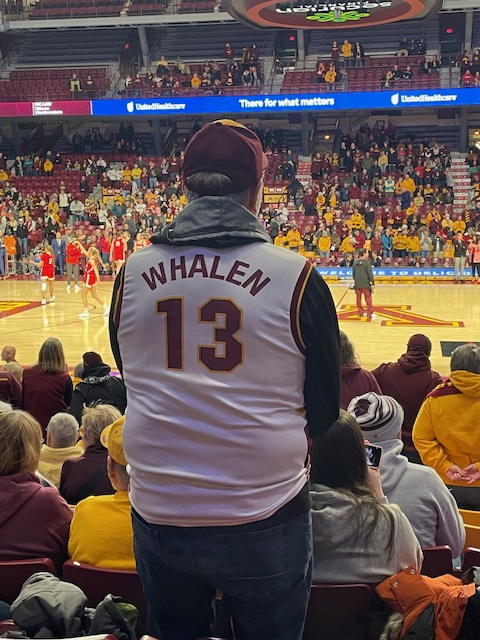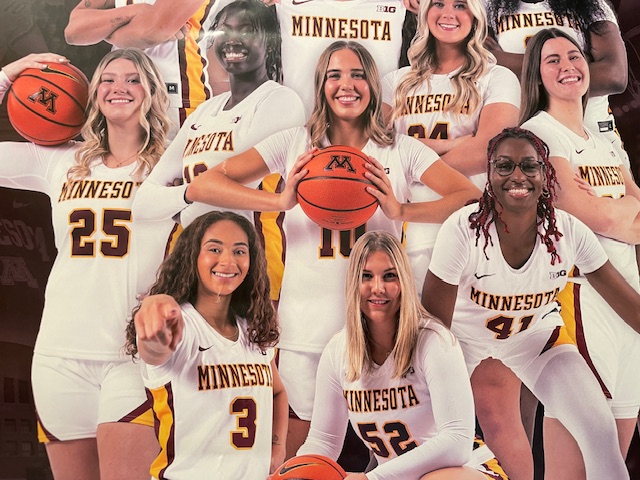Leading up to my vacation in mid-April — where my modest goals were to unplug, hike, read and relax — I loved watching people’s faces when I told them where I was going.
“Paducah.”
Is that in Kentucky?
“Yes, Mitch McConnell territory.”
So, what draws you there?
In truth, it was a friend recommending the arts scene and the National Quilt Museum that got me thinking about Paducah (and trying to talk my husband into it). He and I had debated about Memphis, Santa Fe and Asheville, North Carolina, but what we really wanted was a manageable, low-key place in which we could escape city traffic and return to our small-town roots — but still have some interesting things to do. If that meant two deep-blue Minnesota liberals would venture into solid red Kentucky, so be it.

Paducah, the smallest of the nine UNESCO Creative Cities in the United States, seemed to fit what we were looking for. UNESCO is the United Nations Educational, Scientific and Cultural Organization, and it cites Paducah (along with Santa Fe) as a notable City of Crafts and Folk Art. We found that to be true, during a five-day visit that included:
- An Indigo Girls concert at the 1,800-seat Carson Center for the Performing Arts, featuring Leech Lake-born artist Annie Humphrey as the opening act (her daughter danced in a jingle dress onstage).
- An impromptu and well-informed 90-minute tour of the 60-plus murals that showcase the town’s history on its floodwall, led by an official Paducah Ambassador who said he was passing time while his wife got her hair done.
- A docent-led tour of the stunning National Quilt Museum, barely a week before the American Quilter’s Society’s annual QuiltWeek began, and only days after 20,000 visitors descended on small-town Paducah to watch the eclipse.
- Coming up in May: the annual Cinema Systers Film Festival showcasing lesbian-made movies and billing itself as the “only all-lesbian film festival in the USA” (and it’s in Kentucky!).
The population of McCracken County, for which Paducah is the county seat, is 67,400. But to find this array of culture in a town of 27,000 — cafés and restaurants, locally owned art shops, bars with bands and solo artists, a river history museum, a downtown movie theater screening Civil War — was astonishing on the southern edge of the Midwest.
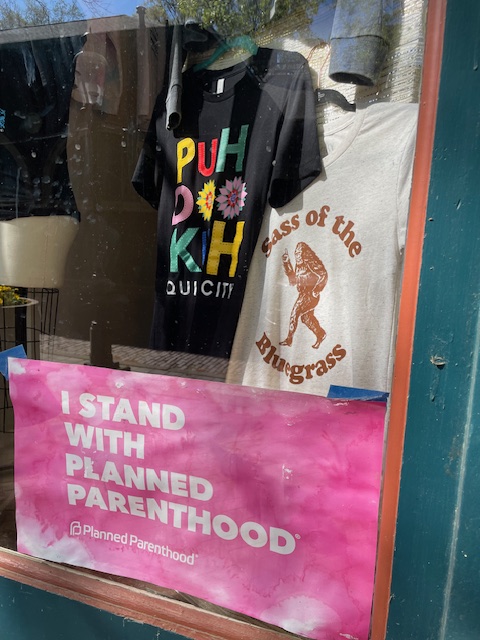

And that’s my point. Had we simply driven through downtown, where the Republican Party headquarters sits squarely in a business district pushing to make a post-COVID comeback, I’d have confirmed my stereotypes about Kentucky (which still calls itself a commonwealth) and kept going. But we got out of the car and stayed a few days — meeting locals, walking the streets, riding bikes, renting a 130-year-old brick “shotgun house” in a weedy, working-class part of town a fair distance from the Holiday Inn where the quilters stay.
We frequented an “all are welcome here” coffeehouse, Etcetera, one of the few eating establishments that didn’t shut down on Sunday in this heavily Christian town. (The closest Unitarian church, which I would have liked to attend, was 97 miles away in Clarksville, Tennessee.) Etcetera attracts colorfully tattooed young people and has a resident cat who sleeps in a heated little house on the patio. The backyard neighbor keeps two lovingly restored Studebakers in his garage, and I was only too happy to hang out and read while he chatted up my husband about classic cars.
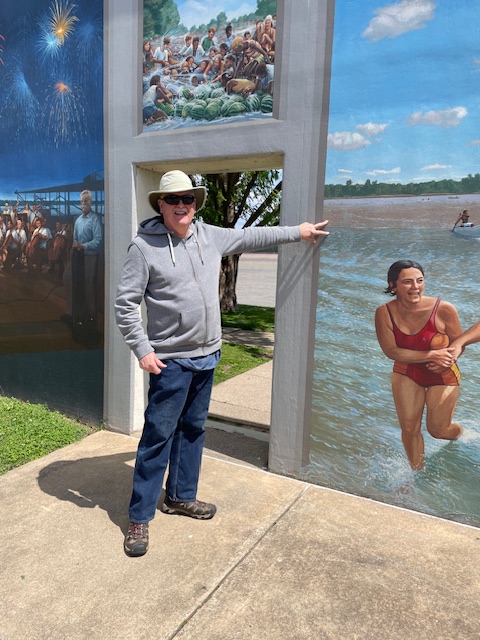

In short, we found our people: the retired schoolteacher outside the Republican headquarters who directed us to Kirchoff’s, the best bakery downtown, with the bonus of a women’s clothing section in the adjoining coffeeshop; the helpful owner and bike mechanic at BikeWorld near the 135-acre Bob Noble Park (also close to the 55-acre Stuart Nelson Park, once the segregated recreation spot for Blacks and now host to the annual Emancipation Celebration every August 8); the young couple restoring the shotgun house next to our AirBnB, who’d wait to blast their music until we left.
We met other folks with whom we were more careful, like the proprietor of a cramped antique shop who piped up when I saw a campaign sign from 1980 in which Ronald Reagan commanded that we “make America great again.”
“I didn’t know that all started with him,” I told my husband. “I thought ‘It’s Morning in America’ was Reagan’s theme.” The proprietor, standing tall, proclaimed Reagan to be a great president. She showed no interest in our viewpoints, likely detecting our disdain, and said her daughter is a Democrat “only because they give her money.” We smiled and moved on to the Four Rivers Corvette Club showcase across the street.
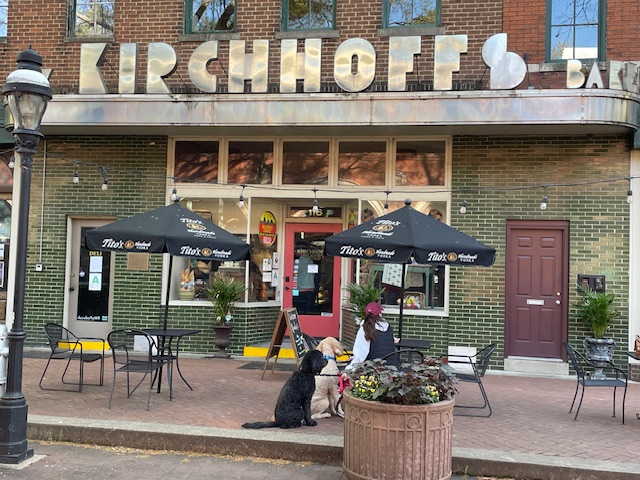
On those blissful early mornings when I sat with my journal and a fresh cup of coffee, I pondered how Paducah felt different from my heart-of-the-city home in St. Paul, Minnesota:
- No recycling containers, anywhere. We even asked a cop.
- No apparent mass transit system, though I did see one bus stop.
- No food co-op; and granted, Paducah is small, but Northfield, Grand Marais and St. Peter, Minnesota, all have them.
- No bookstore downtown and likely no zoning laws. Parking lots take up a lot of precious space.
- No consistent infrastructure for walking or bicycling. Sidewalks in our neighborhood were in disrepair, and some just ended mid-block. The only painted bike lanes I found were out by BikeWorld.
- No recovery meetings for women, though the sunburned men wearing bill caps and work boots welcomed me warmly to their meeting. The sayings and the steps were all comfortably familiar — “just spoken with more of a twang,” I told them with a laugh.
Those men’s generosity, their acceptance, helped me avoid a head space where I crossed my arms and complained about what Paducah isn’t or what it lacks (“another Dollar General store?”). That’s too self-satisfied, too sanctimonious, plus it’s the antithesis (or should be) of why we travel. Not to confirm our ways of thinking or insist that others conform to them, but to challenge our habits and beliefs, expose ourselves to something new.
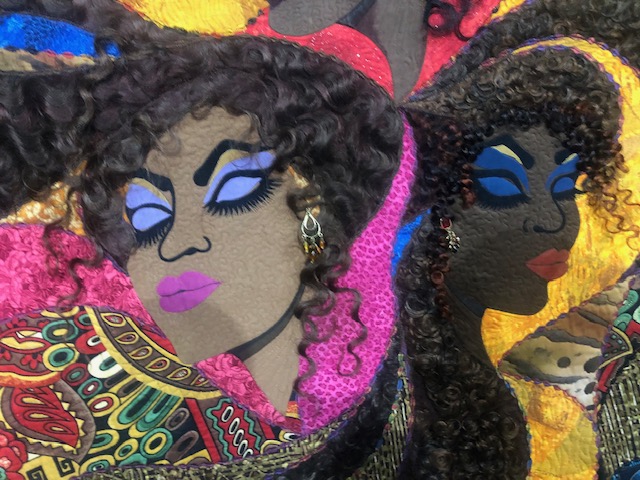
No sooner had I decided to observe rather than judge the differences in Paducah, than I was confronted for what felt like the umpteenth time by a person who declared they could never live in Minnesota because it’s so cold. “How can you stand it up there?” Try as I might to describe the beauty and variety of the four seasons, to explain that you learn to dress for the cold, to cite the social services and amenities that our high tax rate affords us: I could see it. They would visibly shut down.
Whether on the plane, or at Ann Patchett’s bookstore, Paranassus Books (our one stop in Nashville), or in a conversation where I was trying to show genuine interest in Paducah and its confluence of rivers or the stunning Land Between the Lakes Recreation Area that straddles Kentucky and Tennessee, the person who had a preconceived notion about Minnesota clearly wasn’t interested in learning more.
And that’s a shame, because I’d like to show them my home state with the same joy, vigor and gracious hospitality that they showed me theirs. I never thought I would visit Kentucky. I’m too mad at Mitch McConnell and the legacy he’s left us of a conservative six-member super majority on the U.S. Supreme Court. But if politics were a reason to avoid travel, I’d go nowhere but Minnesota in the Upper Midwest.


If Kentuckians want to write off Minnesota for the weather, the best I can say is, “Your loss.” I’m glad I visited Paducah, grateful to have pushed past a stereotype. The docent in the National Quilt Museum described the difference between 18 feet and 18 inches in examining the artwork on their walls. “At 18 feet,” she said, “you see the vision. At 18 inches, you see technique.”
From 18 feet away — or, actually, 744 miles — my vision of Paducah was that of a backwater, no place I’d ever care to visit. From 18 inches, right up close, it was a special community, with a lively arts scene and friendly people. A town I would return to, and one I recommend.

